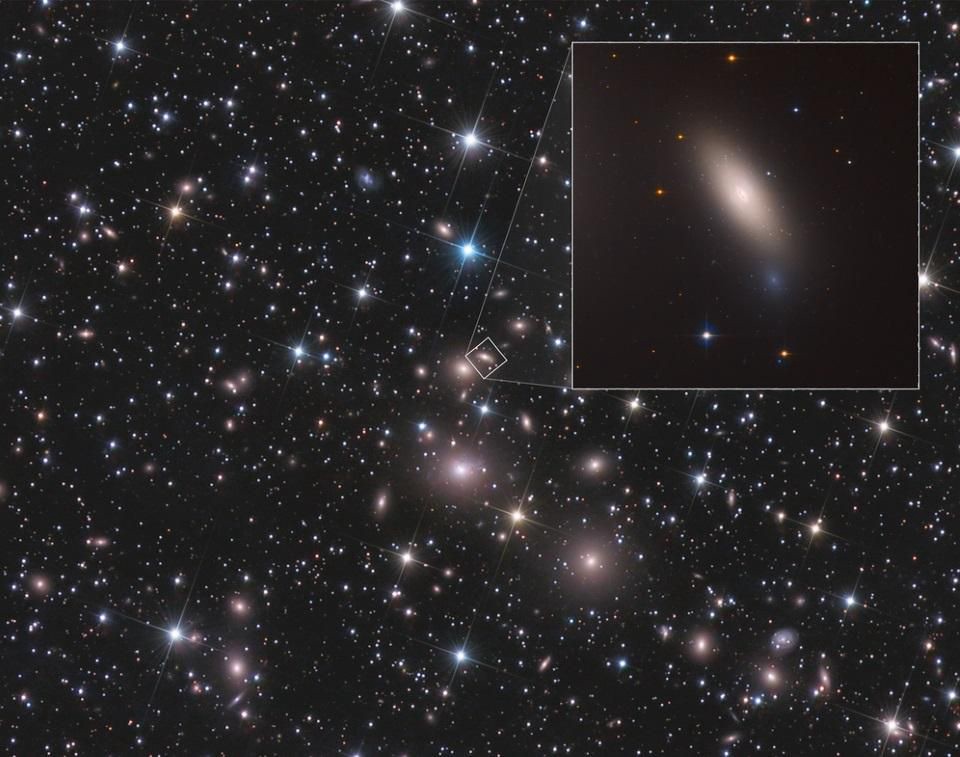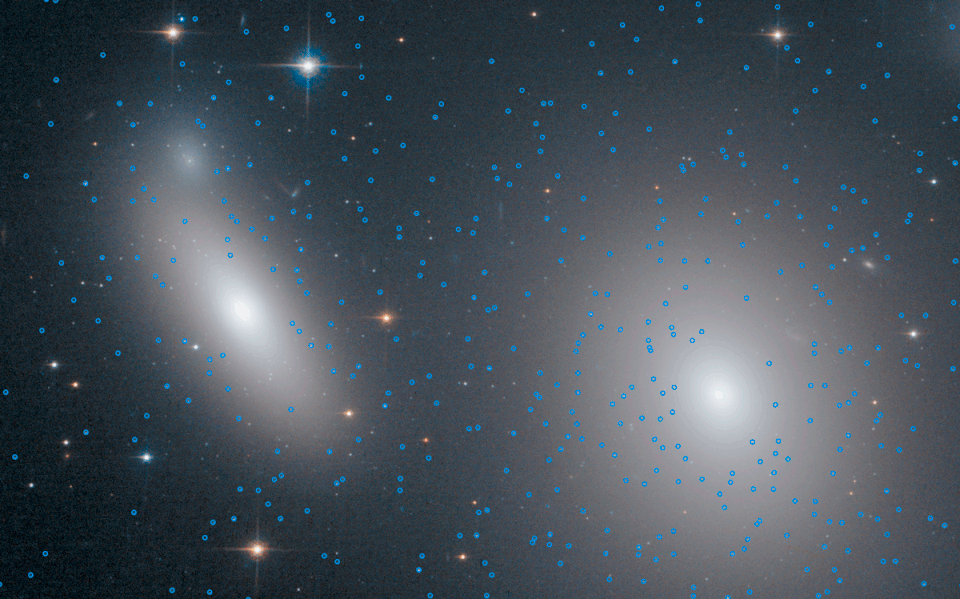From Ethan Siegel
Mar 26, 2018
With hundreds of billions of stars burning bright, ‘dead’ seems like a bit of an exaggeration. But every galaxy is headed for this fate, including ours.

Galaxies that have formed no new stars in billions of years and have no gas left inside them are considered ‘red-and-dead.’ With the close examination of NGC 1277, we may have discovered the first such galaxy in our own cosmic backyard. (NASA, ESA, M. Beasley (Instituto de Astrofísica de Canarias), and P. Kehusmaa)
As long as a galaxy is forming stars, it’s considered to be alive by astronomers.

The Trifid Nebula. located in the plane of the Milky Way, showcases a hotbed of young, newborn stars at its core. These stars form along high-density regions due to cool, collapsing gas clouds. (ESO / WFI / MPG / La Silla)



Our Milky Way contains large star-forming regions, mostly along its spiral arms, indicating stellar life.

The giant elliptical near the center of the Coma Cluster, NGC 4874 (at right), is typical of the largest, brightest galaxies found at the centers of the most massive galaxy clusters. Its stars are primarily older and redder, with only a few populations of bluer stars found sparsely inside. (NASA/ESA Hubble)

But other, mostly elliptical galaxies, stopped forming stars many billions of years ago.

Arp 116, dominated by the giant elliptical Messier 60. Without large populations of gas to form new stars, the stars already existing within the galaxy will eventually burn out, leaving not very much that can illuminate the skies behind. (NASA/ESA Hubble Space Telescope)
These galaxies are called red-and-dead, because they don’t have any hot, young, blue stars associated with recent star formation.

Galaxy clusters, like Abell 1689, are the largest bound structures in the Universe. When spirals merge, for example, a large number of new stars form, but either post-merger or by speeding through the intra-cluster medium, gas can be stripped away, leading to the end of star formation. (NASA, ESA, E. Jullo (Jet Propulsion Laboratory), P. Natarajan (Yale University), and J.-P. Kneib (Laboratoire d’Astrophysique de Marseille, CNRS, France))
Since the hottest, bluest stars burn through their fuel the fastest, an intrinsic red color is evidence that no new stars have formed for a long time.

The ‘red-and-dead’ galaxy NGC 1277 is found inside the Perseus cluster. While the other galaxies contain a mix of red-and-blue stars, this galaxy hasn’t formed new stars in approximately 10 billion years.(NASA, ESA, M. Beasley (Instituto de Astrofísica de Canarias), and P. Kehusmaa)
The leading theory is that galaxies require gas to form new stars.

Galaxies undergoing massive bursts of star formation expel large quantities of matter at great speeds. They also glow red covering the whole galaxy, thanks to hydrogen emissions. This particular galaxy, M82, the Cigar Galaxy, is gravitationally interacting with its neighbor, M81, causing this burst of activity. (NASA, ESA, and The Hubble Heritage Team (STScI/AURA))
If no stars are forming, the galaxy must be gas-free.
This is a blink comparison that plots the location of the red stars and blue stars that dominate the globular clusters in galaxies NGC 1277 and NGC 1278. It shows that NGC 1277 is dominated by ancient red globular clusters. This is evidence that galaxy NGC 1277 stopped making new stars many billions of years ago, compared to NGC 1278, which has more young blue star clusters. (NASA, ESA, and Z. Levay (STScI))
When mergers and interactions occur, star formation accelerates, expelling the critical material.

Galaxies that speed through the intergalactic medium will have their gas and material stripped away, which will lead to a trail of stars formed in the wake of the expelled material, but will prevent new stars from forming within the galaxy itself. This galaxy, above, is in the process of being stripped away of its gas entirely. (NASA, ESA Acknowledgements: Ming Sun (UAH), and Serge Meunier)

The galaxy NGC 1277, speeding through the Perseus cluster, not only contains predominantly red stars, but red (and not blue) globular clusters, as well as a shockingly large supermassive black hole to go along with its rapid speed through the cluster. (Michael A. Beasley, Ignacio Trujillo, Ryan Leaman & Mireia Montes, Nature (2018),https://www.nature.com/articles/nature25756)
For the first time, we’ve successfully identified an old red-and-dead galaxy in our cosmic backyard.
Galaxy NGC 1277 moves at over 2,000,000 miles-per-hour through the Perseus cluster, where it hasn’t formed new stars in 10 billion years.

The distribution of globular clusters, by color (blue to the left, red to the right) of two galaxies in the Perseus cluster: the red-and-dead NGC 1277 and the very-much-alive NGC 1278. Background clusters are predominantly blue as well. (Michael A. Beasley, Ignacio Trujillo, Ryan Leaman & Mireia Montes, Nature (2018), doi:10.1038/nature25756 [link is above/nature25756)
Its stars and globular clusters are entirely red. Unless it devours a new gas source, no new stars will form inside it.
See the full article here .
Please help promote STEM in your local schools.
“Starts With A Bang! is a blog/video blog about cosmology, physics, astronomy, and anything else I find interesting enough to write about. I am a firm believer that the highest good in life is learning, and the greatest evil is willful ignorance. The goal of everything on this site is to help inform you about our world, how we came to be here, and to understand how it all works. As I write these pages for you, I hope to not only explain to you what we know, think, and believe, but how we know it, and why we draw the conclusions we do. It is my hope that you find this interesting, informative, and accessible,” says Ethan


